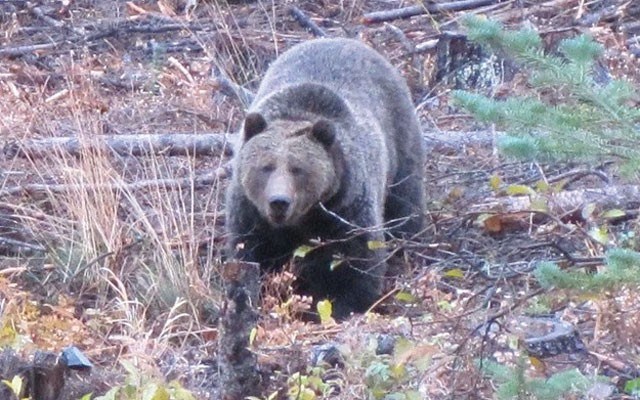Detective Sergeant Cynthia Mann has no doubt that a grizzly bear sow called Jewel, critical to the dwindling grizzly population in southwestern B.C., was shot and killed last year.
She wants to know who did it and now she's appealing to the public for help. A reward has also been posted.
"We're very, very confident that she was illegally killed in October of 2012," said Mann, the lead investigator from the Conservation Officer Services.
Jewel was one of 24 bears in the Stein-Nahatlatch population, one of less than 300 in the southern most area of grizzly bear habitat on the west coast.
Her death has left many in the community upset.
"Over the years we've been basically using grizzly bears as an umbrella species for the St'at'imc culture," said Sue Senger of St'at'imc Government Services.
"All the of the traditional foods that the St'at'imc use are also grizzly bear foods. And so when we talk about grizzly bears being threatened we can also talk about the St'at'imc culture being threatened. If the landscape isn't supporting the bears and the bears use all the same traditional food as the people, then what does that mean for the culture?
"This is more than just losing grizzly bears and reducing range; it's threatening the very existence of these people."
It's one reason why there is such a big push to find out who is responsible.
Joining in the quest to catch the poachers is the Coast to Cascades Grizzly Bear Initiative. Two members of the initiative — the Pemberton Wildlife Association and Conservation Northwest — have each put up $1,000 as a reward for information leading to the arrest and conviction of the person or persons who killed Jewel.
The initiative is also calling for increased Conservation Officer Service presence in the backcountry and stiffer penalties for illegal grizzly killing, among other things.
Mann knows exactly when Jewel went missing. She was wearing a high tech radio collar linked to a satellite tracker that could pinpoint exactly where she was. The last ping from that collar was around October 13, 2012 in the Texas Creek area.
Bear researchers weren't too worried at that time, believing she was denning for the winter. But when there was no sign of her in the spring, hope for Jewel began to fade. Researchers went out looking for signs of her.
In June her collar was discovered in the same area as her last known location.
"As far as the specifics on the collar, I can't comment on that," said Mann. "I can tell you we have considered all the evidence.
"There was no open season for grizzly bears in that management unit of the Texas Creek drainage. She was not in an interface situation which would have led to potential conflict which could have led to her being killed."
Jewel wasn't just any grizzly bear.
From a scientific and biological point of view Jewel was an extremely important bear.
She is believed to be about one of six breeding females in the estimated 24-strong Stein-Nahatlatch population.
In addition, Jewel had unique behaviours — the first female to use dry spring habitat, which is counterintuitive to bear behaviour.
"All the things we know about bears put them on wet spring habitat and here she is digging desert parsley," said Senger.
The bears are among the most genetically isolated grizzlies in North America, in the southern tip of an increasingly shrinking grizzly territory, steadily creeping northwards over the last two centuries.
"The Texas Creek Valley and the Stein is an incredible wild place and that wilderness is defined by the fact that there's still grizzly bears up there," said Texas Creek resident and former Whistler councillor Eckhard Zeidler. "We might now be down to only five reproducing females in the Stein–Nahatlatch grizzly bear population unit. It's getting close to the point where the population might not be viable long term."




